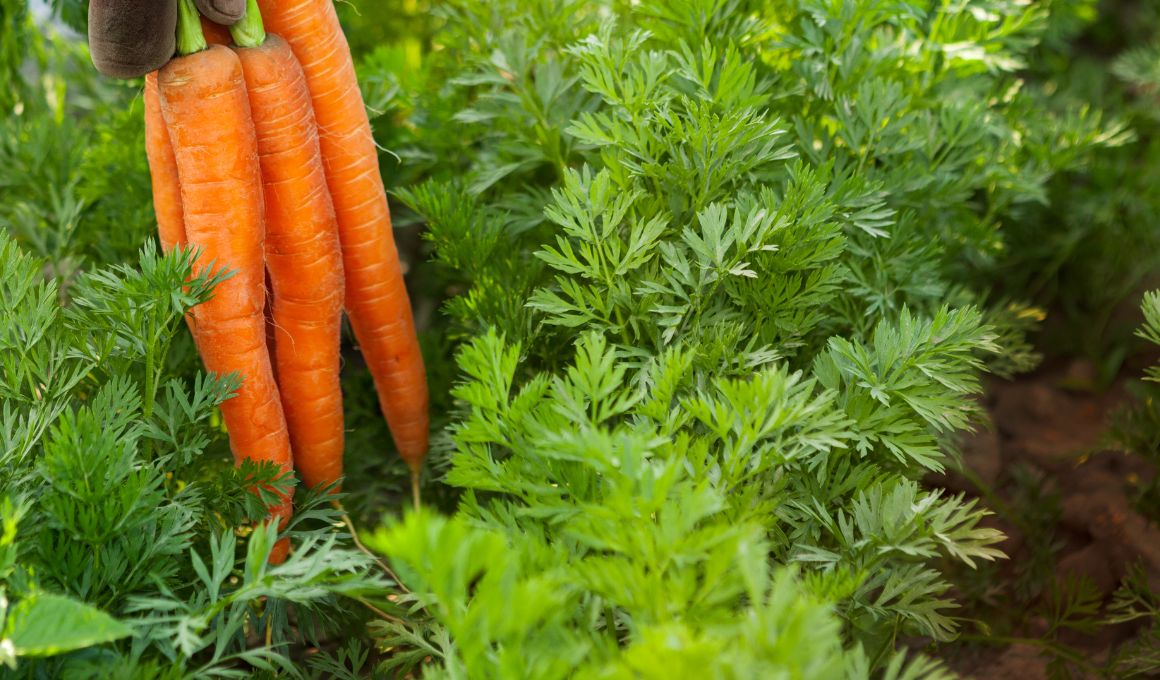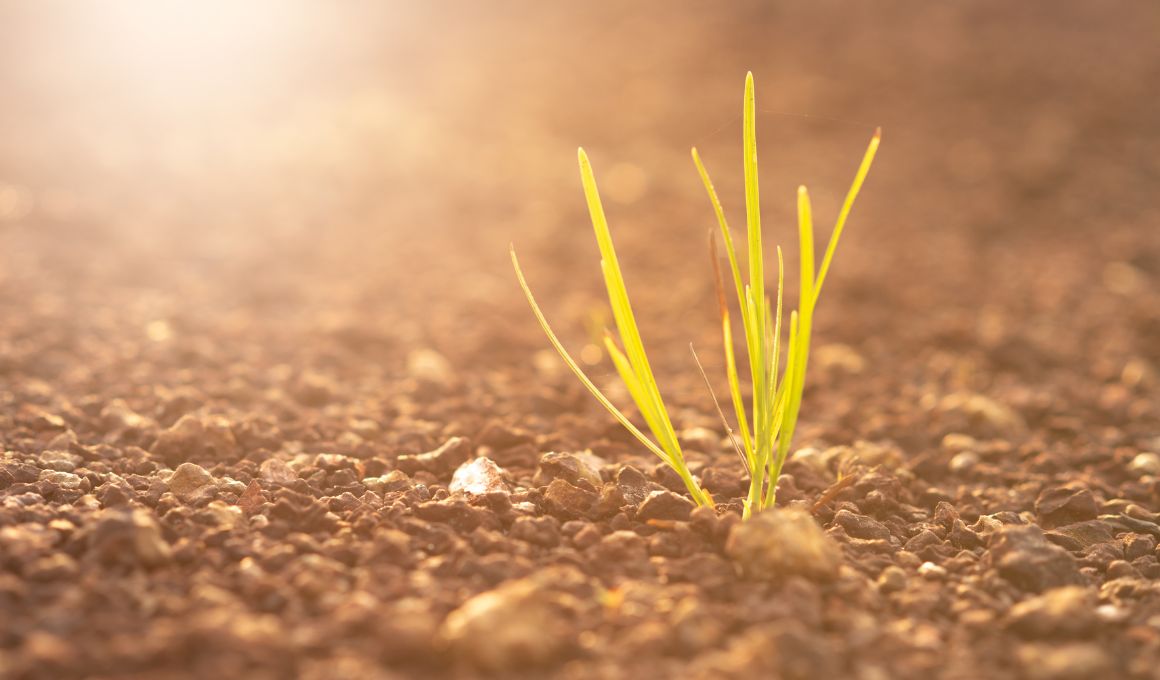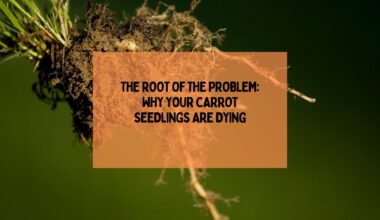Southern Blight: Effective ways to control carrot disease include crop rotation, soil sanitation, and fungicides, which can help control the spread.
Carrots are one of the most popular root vegetables grown in home gardens and commercially. However, they are not immune to diseases and pests. One of the most common diseases that can affect carrots is Southern blight.
In this article, I will discuss what Southern blight is, how it affects carrots, and, most importantly, how to manage carrots with Southern blight.
What is Southern Blight?

Southern blight, also known as white mold, is a fungal disease caused by the fungus Sclerotium rolfsii. This disease can affect a wide range of plants, including carrots. The fungus infects the plant’s roots and causes them to rot, leading to stunted growth, wilting, and death of the plant.
How Does Southern Blight Affect Carrots?

Southern blight affects the roots of the carrot plant, causing them to rot. This leads to stunted growth, wilting, and, eventually, death of the plant. The fungus also produces hard, round structures called sclerotia, which can survive in the soil for several years, making it challenging to eradicate.
Identifying Southern Blight on Carrots
Identifying Southern blight on carrots as early as possible is essential to prevent the disease from spreading.
Here are some common symptoms of Southern blight on carrots:
- Wilting and yellowing of the leaves
- Stunted growth
- Brown lesions on the stem near the soil line
- White fungal growth around the base of the stem
- Hard, round sclerotia in the soil
Related Read
- The Ultimate Guide To Cucumber Pests and Diseases
- How to Find, Prevent, and Treat Zucchini Plant Problems?
- 10 Tomato Diseases – How to Recognize, Treat, and Prevent?
What Causes Southern Blight on Carrots?

Southern blight is caused by the fungus Sclerotium rolfsii, which can survive in the soil for several years. The fungus can infect carrots through wounds in the roots caused by cultivation, insects, or other factors. The disease can also be spread through infected soil, plant debris, and contaminated tools.
Risk Factors for Southern Blight on Carrots
Several risk factors can increase the likelihood of Southern blight on carrots, including:
- Planting carrots in the same soil for consecutive years
- High temperatures and humidity
- Overwatering or poor drainage
- Heavy soil with poor aeration
- Planting in contaminated soil or using contaminated tools
Preventing Southern Blight on Carrots
Prevention is the best way to manage Southern blight on carrots.
Here are some strategies to prevent the disease from occurring:
- Practice crop rotation by planting carrots in a different area each year
- Avoid planting carrots in soil previously with Southern blight or other fungal diseases.
- Use clean tools and equipment when working with carrots.
- Ensure proper drainage and avoid overwatering.
- Improve soil aeration by adding organic matter.
- Avoid planting carrots in areas with high temperatures and humidity.
Crop Rotation to Manage Southern Blight on Carrots
Crop rotation is an effective way to manage Southern blight on carrots. By rotating crops, you can prevent the fungus from building up in the soil. It is recommended to wait at least three years before planting carrots in the same area where Southern blight has occurred.
Soil Solarization for Southern Blight Control
Soil solarization is another effective way to manage Southern blight on carrots. This process involves covering the soil with plastic and exposing it to the sun, which heats it and kills the fungus. This method should be done during the year’s hottest months for optimal results.
Fungicides for Southern Blight Management
Fungicides can be used to manage Southern blight on carrots, but they are most effective as a preventative measure. Fungicides should be applied before the disease appears, and they should be applied according to the manufacturer’s instructions.
Several fungicides, including thiophanate-methyl, azoxystrobin, and propiconazole, can manage Southern blight.
Also, Read
- The Management Of Carrot Cotton Root Rot And Its Treatment
- The Ultimate Guide To Recognizing And Managing Cercospora Leaf Blight In Carrots
- Can You Grow Carrots? / What Are Some Common Carrot Varieties?
Organic Approaches to Southern Blight Management
Several options are available for those who prefer organic approaches to manage Southern blight on carrots. These include:
- Adding compost and other organic matter to the soil improves soil health and promotes beneficial microorganisms that can compete with the fungus.
- Using bio fungicides, which are natural products that contain beneficial microorganisms that can suppress the growth of the fungus.
- Applying neem oil, a natural pesticide, can also suppress the growth of the fungus.
Biological Control of Southern Blight

Biological control involves using natural enemies of the fungus to manage Southern blight on carrots. One effective biological control method is to use soil-borne antagonists, such as Trichoderma species, which can compete with the fungus and reduce its growth.
Companion Planting for Southern Blight Management
Companion planting involves planting certain plants together to help manage pests and diseases.
Some plants that can be beneficial in managing Southern blight on carrots include:
- Marigolds produce compounds that can suppress the growth of the fungus.
- Mustard greens can help reduce the fungus population in the soil.
Harvesting and Post-Harvest Management of Southern Blight-Affected Carrots
If you have harvested carrots that have been affected by Southern blight, it is essential to handle them carefully to prevent the spread of the disease.
Here are some tips for harvesting and post-harvest management of Southern blight-affected carrots:
- Harvest carrots when the soil is dry to prevent the fungus from spreading.
- Do not leave infected carrots in the field or compost them.
- Store harvested carrots in a cool, dry place to prevent the growth of the fungus.
Conclusion
Southern blight can be a severe problem for carrot growers, but several strategies are available to manage the disease. Prevention is the most effective way to manage Southern blight, but if the disease does occur, several chemical and organic approaches can be used to control it.
Combining these strategies allows you to manage Southern blight and protect their carrot crop effectively.
Happy Gardening!







